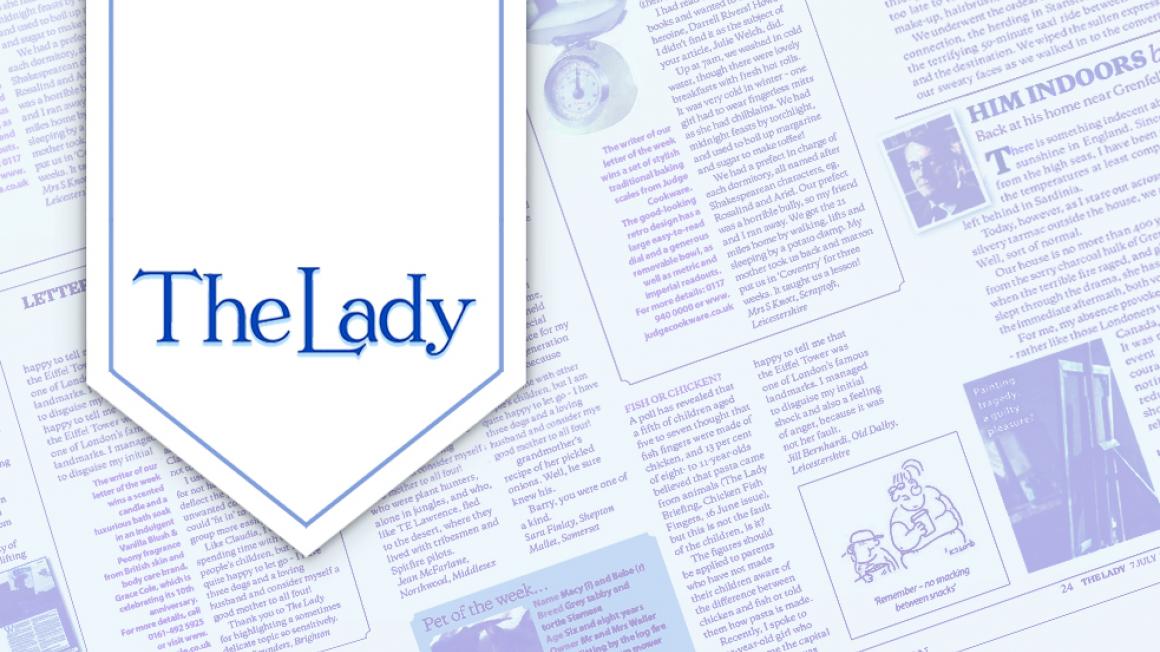Book Reviews: 31 May
OUT NOW
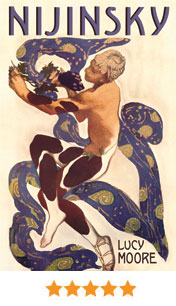 NIJINSKY: A LIFE by Lucy Moore (Profile Books, £25; offer price, £18)
NIJINSKY: A LIFE by Lucy Moore (Profile Books, £25; offer price, £18) One hundred years ago on 29 May 1913, dancer and choreographer Vaslav Nijinsky, born in 1889, transformed the world of dance overnight with his provocative and revolutionary ballet, The Rite Of Spring, at the Théâtre des Champs-Elysées, Paris. The effect of Stravinsky’s strident, pounding music and the raw, primitive steps, transformed dance just as Picasso had changed the landscape of painting. It was unlike anything the audience had ever seen before. So who was this man whose talent defied restraint and of whom someone observed ‘one could not define where the human ended and the animal began’ of his performance as the eponymous Faun?
Lucy Moore’s highly readable and absorbing biography draws on Nijinsky’s own diaries for the first time, with Moore offering her own interpretation of Nijinsky’s increasingly erratic behaviour. Of the powerful impresario Diaghilev, founder of the Ballets Russes, Moore believes Nijinsky was ‘in thrall to the older man but not physically attracted to him’ and when Nijinsky married the devoted Romola, it triggered a rift with Diaghilev from which Nijinsky never recovered.
All the volatility of early 20thcentury Russian and European theatre is there as Nijinsky’s life unfolds from a child born to gifted professional dancers, to his meteoric rise through the dance world, his marriage, and his descent into schizophrenia and subsequent death in 1950.
Gillian Spickernell
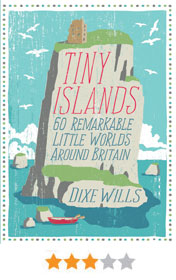 TINY ISLANDS: 60 REMARKABLE LITTLE WORLDS AROUND BRITAIN by Dixe Wills (AA, £14.99; offer price, £12.99)
TINY ISLANDS: 60 REMARKABLE LITTLE WORLDS AROUND BRITAIN by Dixe Wills (AA, £14.99; offer price, £12.99)If you fancy a holiday on a British island – and there are 6,289 fragments of land belonging to, but not attached to, the British coast, to choose from – Dixe Wills’s book will be extremely helpful. Most of these fragments are pretty uninspiring, being uninhabited and lacking in the basic necessities of life, but the 60 here are candidates for the perfect away-from-it-all vacation – visitor-friendly in other words – and Wills combines historical and geographical information, with details of accommodation, tea rooms, pubs and things to do other than just walking around.
Theo Walden
 THE GOLDEN EGG by Donna Leon (William Heinemann, £17.99; offer price, £14.99)
THE GOLDEN EGG by Donna Leon (William Heinemann, £17.99; offer price, £14.99)Leon ventures once more into Brunetti territory in the darker canal streets and piazzas of Venice. The middle-aged deaf mute with the mental age of a child who helped out at the local dry cleaners has been found dead from an overdose of sleeping pills. Although there are no suspicious circumstances, Brunetti’s wife Paola is upset by the indifference that the death provokes and as Brunetti makes standard enquiries he becomes concerned by how little is known of the unfortunate Davide.
His mother is angry and contradictory and her reputation in the neighbourhood not of the best. There appears to be no record of Davide’s birth education or benefits and Brunetti becomes increasingly concerned that an Italian born and brought up in modern Italy could live so off the radar in the heart of Venice.
There are the usual Brunetti family meals to tickle the salivary glands and Signorina Elletra’s dubious computer skills are put to good use in the tradition of Leon’s novels. However, this is a much darker version of Brunettiland than the earlier novels. Elletra’s physical charms are waning with age and there is a weariness to Brunetti’s championship of honesty and integrity. The character of the deaf mute seems to serve as an allegory of the political landscape of Italy – the public silenced and ignored, whilst those in power continue the ancient Italian tradition of fi ddle-playing.
Victoria Clark
BOOK OF THE WEEK
The weary travellerPaul Theroux confronts Africa and ageing. Will this be his last trip asks Buchan Hamilton
 THE LAST TRAIN TO ZONA VERDE: OVERLAND FROM CAPE TOWN TO ANGOLA by Paul Theroux (Hamish Hamilton, £20; offer price, £16)
THE LAST TRAIN TO ZONA VERDE: OVERLAND FROM CAPE TOWN TO ANGOLA by Paul Theroux (Hamish Hamilton, £20; offer price, £16) Paul Theroux is the kind of travel writer who informed one’s adolescent years, whose prose, often furious – Theroux had, indeed has, a genius for sounding thoroughly pissed off in an entertaining way – contained in books like The Great Railway Bazaar and The Old Patagonian Express, sent you off on, albeit tamer, journeys of your own. He gave you a licence to travel bravely – and made it OK, even romantic, to do it alone in a fi lthy temper.
So the arrival of The Last Train To Zona Verde is an event. In more ways than one as it turns out, for Last Train has something of a valedictory air about it. Theroux has lived in Africa and in 2003, trekked down the right-hand side of the country to Cape Town. Last Train sees him embarking up the left-hand side; overland from Cape Town to Angola and points beyond, via Namibia, the country where Angelina Jolie gave birth, and which also contains an elephant sanctuary and a frightening border crossing into Angola itself. And not enjoying it.
Age has intervened, for one thing; Theroux feels old and vulnerable, but also fi nds a different, more dangerous climate in the country itself; the further north he travels, the more he experiences a ‘hot African world of bad karma, near anarchy and opportunism. I saw poverty and desperation everywhere, a scavenging culture, and ultimately it made me question the whole purpose of my sentimental journey.’
Having intended originally to continue his journey into Nigeria, he calls it a day in Angola: ‘What would I fi nd that I had not already learned?’ he wonders. His readers can hardly blame him; indeed, one of the many joys of this book is a sense of relief that you’re not the one having to travel through this hot and hellish land – Theroux is doing it for you.
And he does not think he will return, either to Africa, or to the kind of travel writing with which he made his name. To describe ‘the anguish’ of Africa, he notes: ‘You need to be a traveller with a taste for ruins.’ He is no longer the kind of person, he realises who is suited ‘to chronicling the gutter life of the African slum... Let someone else... continue where I left off’.
Those who try have a hard act to follow.
MUST READ
Collectable Christie AGATHA CHRISTIE: Miss Marple Novels Collection, 4 volume set (The Folio Society, £100)
AGATHA CHRISTIE: Miss Marple Novels Collection, 4 volume set (The Folio Society, £100)Only the Bible and Shakespeare out-sell crime writer Agatha Christie who died in 1976 and has racked up over 2 billion sales worldwide. Most of her novels are out in paperback, so this smart set of four hardback Miss Marple mysteries – Sleeping Murder, A Pocket Full Of Rye, The Body In The Library and The Murder At The Vicarage – would make a great gift for fans of the elderly amateur detective and her razor-sharp intelligence and talent for spotting clues invisible to others.
They’re illustrated by Andrew Davidson who has perfectly caught the era in which these stories are set, evoking the nostalgic world of St Mary Mead and affording new insights to the characters of unpopular Col Protheroe, shot dead in the vicar’s study, businessman Rex Fortescue who suddenly drops down dead over his cup of morning tea, or delightful Gwenda Reed, beset by inexplicable terror every time she climbs the stairs in her new house.
PAPERBACKS
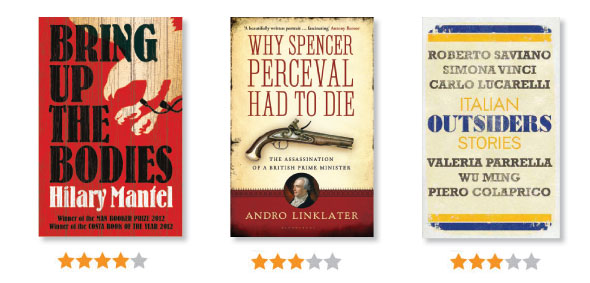
BRING UP THE BODIES by Hilary Mantel (Fourth Estate, £9.99; offer price, £9.49) Second part of the awardwinning trilogy (the final part will be published next year) dealing with the rise and fall of Thomas Cromwell – facilitator to Henry VIII. In Bring Up The Bodies, Cromwell is 50, Henry is married to Anne Boleyn. It’s summer and the court is staying at Wolf Hall, home to the Seymours. Cromwell’s enemies are circling, in this dense, rewarding historical novel about an enigmatic, often ruthless man.
WHY SPENCER PERCEVAL HAD TO DIE by Andro Linklater (Bloomsbury, £9.99; offer price, £9.49)
Spencer Perceval was the only British prime minister (so far) to be assassinated. He was killed by John Bellingham in May 1812. This is Linklater’s robust attempt to explain why.
ITALIAN OUTSIDERS STORIES by various authors (Quercus, £12; offer price, £10.80)
Odd collection of stories written by what you might politely call left-fi eld Italian writers. Not your usual run of subject, but nevertheless engaging enough to repay the effort.
ALSO PUBLISHED…
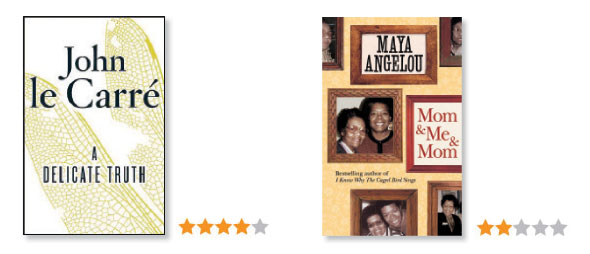
A DELICATE TRUTH by John le Carré (Viking, £18.99; offer price, £14.99) Set in a post war-on-terror Britain, le Carré’s new novel uses a double time-scheme involving a classic CIA, MI6 cock-up over the seizure of an arms dealer in which innocent people die. Three years later, a witness attempts to resolve the mess. Can it be done in a world of secrecy and cynicism? A brilliantly complex, angry story.
MOM & ME & MOM by Maya Angelou (Virago, £12.99; offer price, £11.69)
The seventh autobiography by the author of the bestselling I know Why The Caged Bird Sings. This time 85-year-old Angelou, who was the chosen poet for Bill Clinton’s 1993 inauguration, tells the story of her complex relationship with her mother, Vivian Baxter Johnson, who ran a boarding house in San Francisco, where she was a player on the gambling scene.
LONDON MAP FAIR
Roads less travelled byElla Swift surveys what’s on offer at Europe’s largest antique map fair

The annual London Map Fair held at the Royal Geographical Society takes place next week at the RGS headquarters in Kensington – a great chance for those who have not yet fully succumbed to TomTom and satnav to have a nostalgic wallow in old-fashioned paper maps and surveys. And these maps, many of them antiques, are beautiful – and for sale (prices range from £10 to £500,000), alongside stalls full of atlases, travel books, globes, sea charts, town plans, topographical prints and reference books.
It’s a directional bonanza, featuring antique maps, drawn by 16th- and 17th-century cartographers such as Mercator, Ortelius, Blaeu and John Speed, as well as some unusual 20thcentury cartography – including the satirical propaganda map published by GW Bacon in 1914. Its title comes from the old nursery rhyme, Hark! Hark! The Dogs Do Bark! and shows the countries lining up for war depicted as canine warriors – a British bulldog, a French poodle, German dachshund and an Austrian mongrel.
One of the highlights of the show is a Victorian celestial map – a transparent chart of the heavens published by James Reynolds in 1850, designed to teach children the layout of the stars in the British night sky.
Additional cartographic attractions include a lecture given by Peter Barber, Head of Map Collections at the British Library, who will talk about an historical cartomaniac, George III, whose collection of thousands of maps is kept at the British Library.
The 31st London Map Fair will be held at the RGS, 1 Kensington Gore, London SW7 on 8 and 9 June. 10am-5pm, admission free: www.londonmapfairs.com


